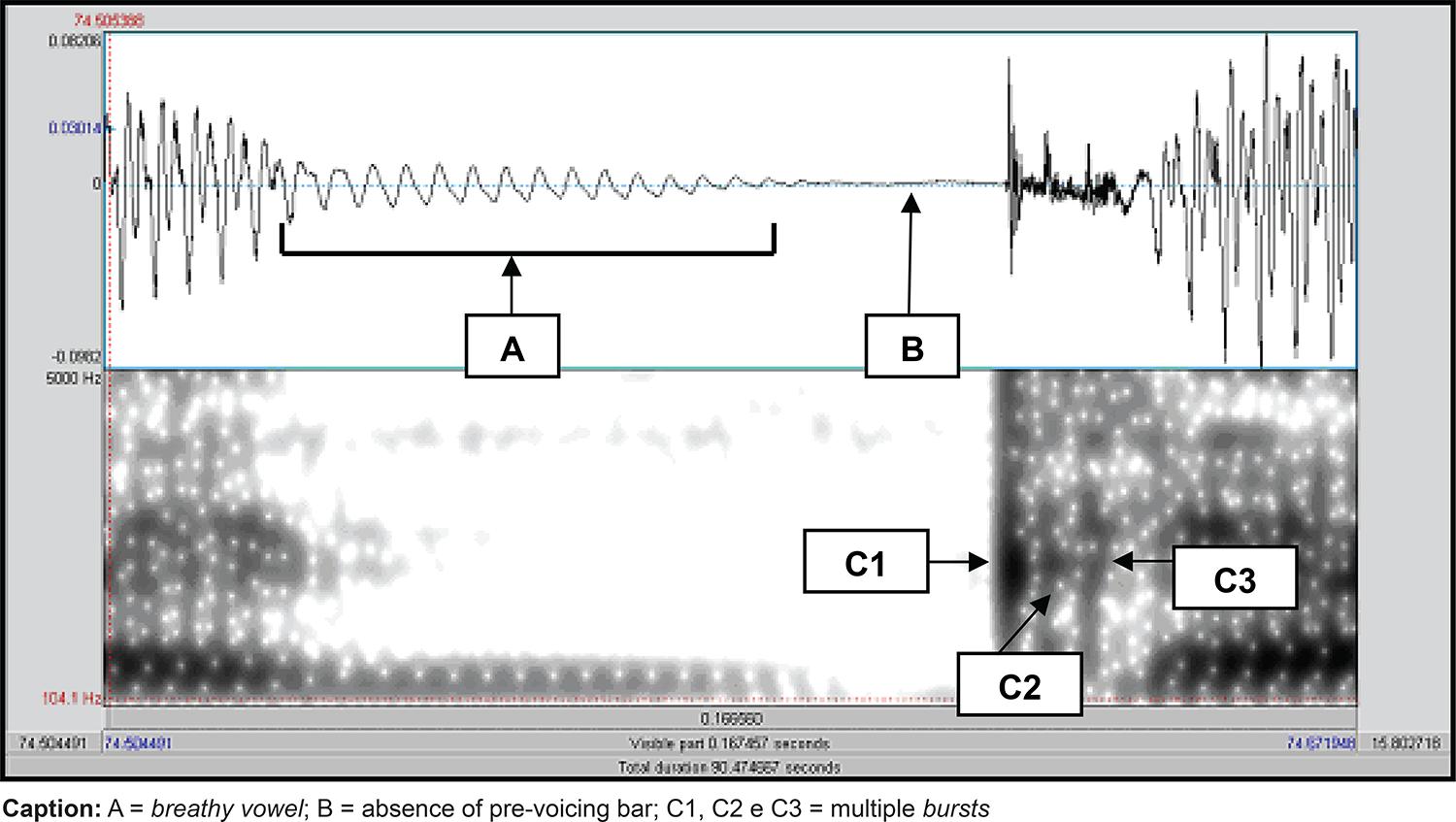Purpose
to investigate and compare the acoustic characteristics of voiceless and voiced plosives in the speech of children with typical phonological development and adults with typical language speech patterns.
Method
the study’s sample is arranged in two groups – 17 adults and 11 children with typical phonological development. Through words/pseudowords ([‘papa], [‘baba], [‘tata], [‘dada], [‘kaka] and [‘gaga]) inserted into carrier phrases (“Say ___ papa again”;), the voice onset time, the length of the vowel, and we measured the burst amplitude and the length of the occlusion. The acoustic records of voiceless and voiced plosives intragroup and intergroup were compared through statistical tests (p<0.05).
Results
in general, the results suggest that: (1) the voice onset time was longer for voiced plosives when compared to the voiceless plosives; (2) the vowel length when followed or preceded by a voiced plosive was longer than in front of a voiceless plosive; (3) the burst amplitude was slightly superior during the production of voiced segments and; (4) the length of the occlusion was superior in the context of voiceless plosives. Furthermore, the adults and children showed many similarities related to the production of these parameters.
Conclusion
the investigated acoustic cues present themselves as strong parameters involved in the characterization of plosives voicing contrasts. Furthermore, the results also indicate many similarities among adults and children with typical phonological patterns. However, when some differences are evident, they occur on medial and unstressed syllables.
Speech Acoustics; Adult; Child; Sound Spectrography/analysis; Speech


